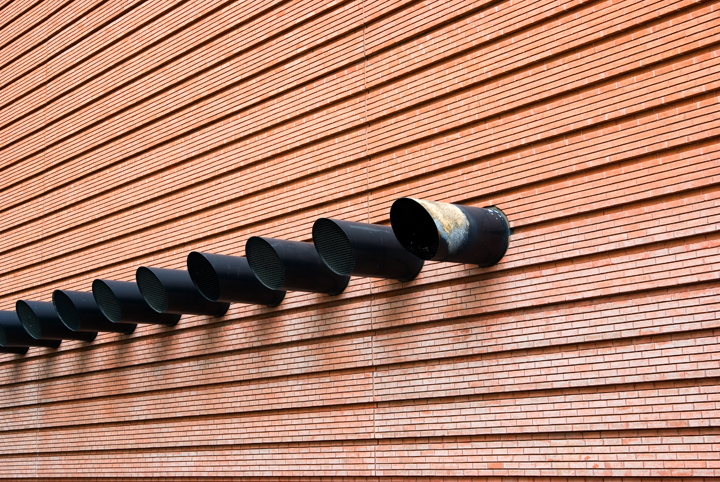BY THE NUMBERS: U.S. Office Construction Picking Up Momentum
108 Million Square Feet Under Construction-Highest Total since 2009
Source: Costar
By: Randyl Drummer
Date Posted: April 29, 2015
After nearly five years of steady but relatively moderate increases, deliveries of newly constructed office space exceeded quarterly office demand nationally in the first quarter as office construction levels moved closer toward their long-term average across the country.
About 15 million square feet of office space was delivered to the U.S. market in the first quarter of 2015, for the first time in the current economic cycle eclipsing total net absorption of office space, which was just over 12 million square feet, according to CoStar office market data.
About 108 million square feet was under construction at the end of first-quarter 2015, up 17% from 92 million square feet in the same period a year ago, according to CoStar data. The level of national office construction has risen very slowly since hitting its long-term historical trough of less than 50 million square feet in late 2010, producing quarterly supply growth that was the moral equivalent of zero when factoring in demolitions of obsolete office space and other loss of inventory.
With higher office rents making new development a viable alternative to buying existing buildings, the amount of office space under construction is finally approaching its quarterly historical average of 122 million square feet, a level last attained in late 2008.
Construction levels are above their historic norm in about one-third of the largest U.S. metros, led by Northern California’s Silicon Valley, where Apple is building its 2.8 million-square-foot “spaceship” corporate campus in Cupertino; and Houston, where ExxonMobil is building its huge new corporate campus. Total space under construction amounts to 7% and about 6%, respectively, of those markets’ rentable inventory.
Other markets seeing an above-average construction bump are Seattle, Austin, San Francisco, Raleigh, Dallas-Fort Worth, Boston, Chicago and Denver.
Shift In Strategy for Developers
Along with the growing demand for new office space comes a shift in strategy for the nation’s largest owners and developers of office buildings, especially those with projects in the largest U.S. CBDs.
Rather than in acquiring buildings at rapidly appreciating prices in its core markets of Boston, San Francisco and Washington, D.C., Boston Properties (NYSE: BXP) is stepping up its strategy of re-investing capital it recycles from the sale of older buildings into new developments that yield higher returns.
“We are spending more time looking at new investments and development sites, or buildings requiring repositioning — both of which leverage our development and operating skill,” said Owen Thomas, Boston Properties chief executive officer, citing the company’s development pipeline of 11 office projects totaling 3.3 million square feet with a total projected cost of $2.1 billion.
Thomas told investors this week that BXP forecasts that these projects funded by cash on the balance sheet will generate a more than 7% cash net operating income yield over the next three years upon completion.
Rising office rents are driving the development boom in metros such as San Francisco, where Boston Property is building the 61-story, 1,070-foot-tall Salesforce Tower, formerly known as the Transbay Tower in the South of Market district. While rents in the Bay City have spiked 70% since the recession, however, two-thirds of the country is still not seeing the kind of rent growth that justifies large-scale new construction, including big metros such as Orange County, CA, Los Angeles and Atlanta.
Other metros seeing limited development or construction compared with history or are starting to cool down are Washington, D.C., Phoenix, San Diego and New York City.
Major project starts in the first quarter included the 1.7 million-square-foot campus fully leased to FMC Technologies in Houston. Also getting under way was the 610,000-square-foot Crosstown Concourse office project, a value-add redevelopment of the former Sears & Roebuck building pre-leased to St. Jude Children’s Research Hospital and other tenants.
Lincoln Property Co. has started 350 Bush Street, the first new office building in San Francisco’s Financial District in more than a decade. The speculative 433,000-square-foot project is driven by a tight 7.8% vacancy rate for top quality 4- and 5-Star buildings in the submarket.
In Phoenix’s Tempe submarket, Ryan Companies and Sunbelt Holdings have started 300 E. Rio Salado Parkway, a 480,000-square-foot building preleased to State Farm for a regional hub.
Office developers delivered 15 million square feet in the quarter, compared with 11 million square feet in the first quarter of 2014, and while completions will pick up slightly through the rest of the year, they will likely total between 65 and 70 million square feet, below the historical completion rate.
Notable first-quarter deliveries included the 1.5 million-square-foot second phase of ExxonMobil’s corporate campus in Houston; and 1K Fulton, a 689,067-square-foot building in the Chicago market that is now 39% occupied, according to CoStar information.
Link to article: US Office Construction







